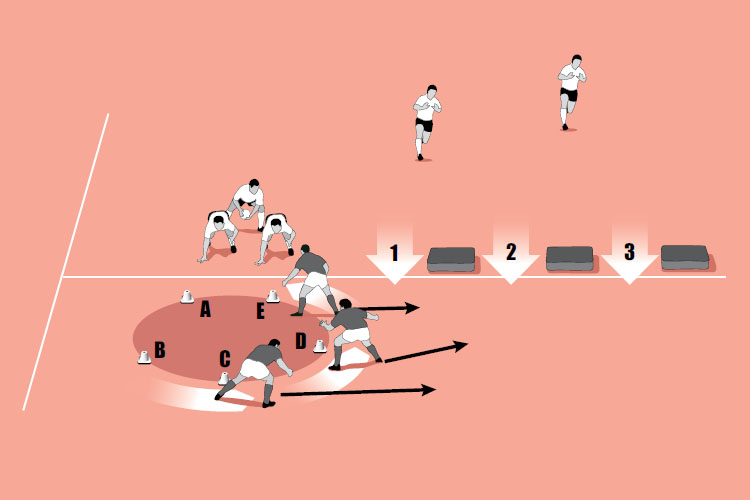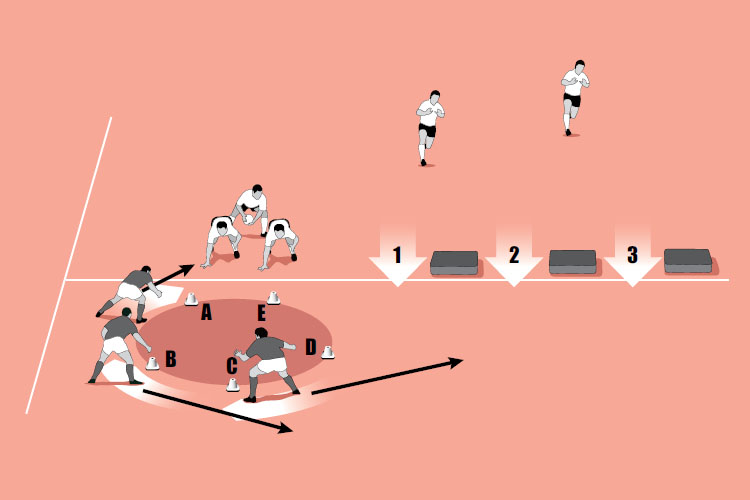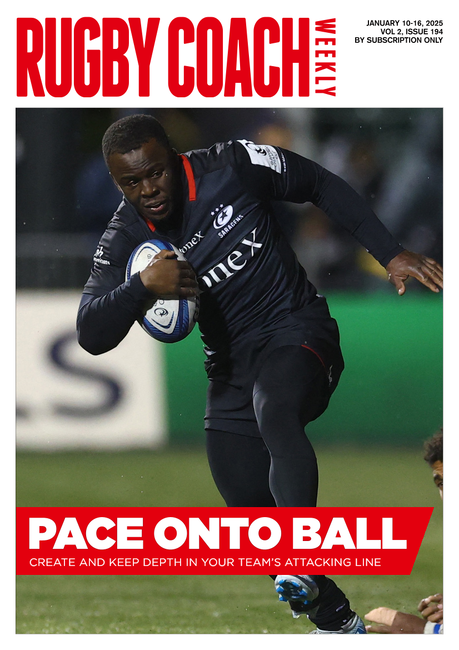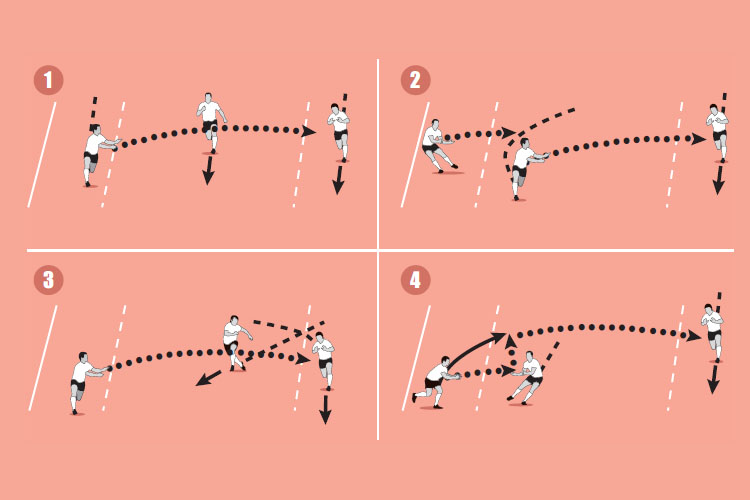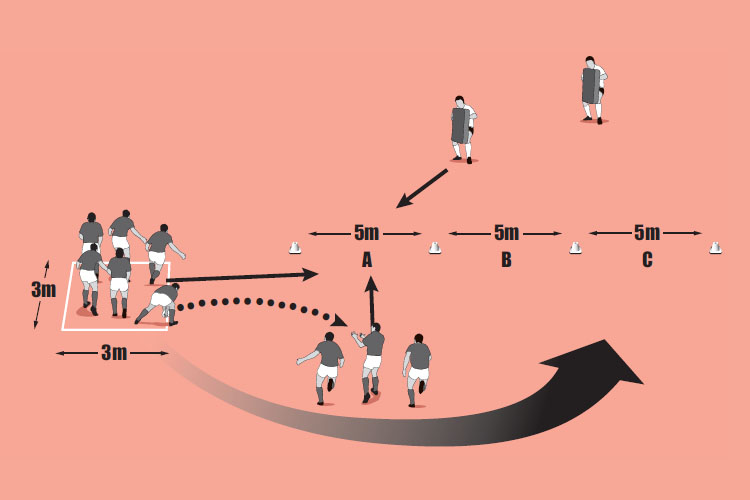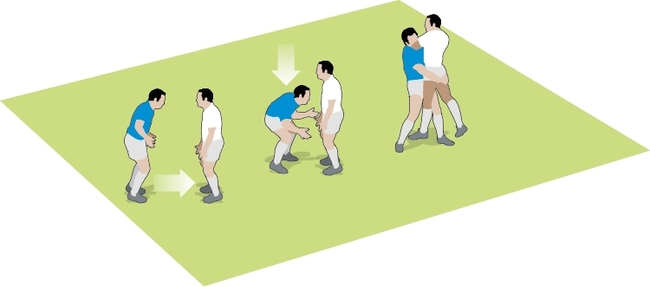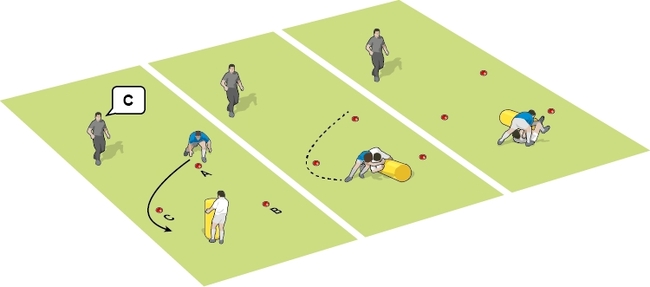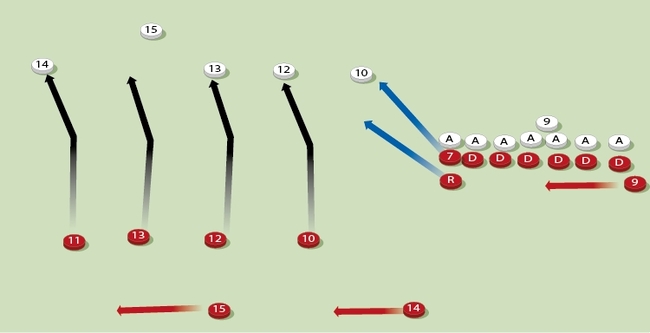Back row defence
Since the back row is closest to the opposition attack from a scrum, it can make the most difference on defending attacks within 10m of the scrum. This session looks at its roles from normal and wheeled scrums and how it might stop the attackers on the gain line.
Warm up time: 5-7
Session time: 8-10
Development time: 10-15
Game time: 10-15
Warm down time: 5-8
What to think about
This is a good exercise for both attack and defence. The attack will have to work out solutions to execute effective line-breaking moves. There are several ways to organise the back row, but with the wheels, players will have to work out how to readjust their running lines. The “last defender” from the scrum, the player furthest from the action, will probably run a covering line but you want at least one player in the front line.set-up
- Decide on who is covering what before the ball comes into the scrum.
- Communicate when the scrum wheels on how the roles have changed.
- Aim to meet the ball carrier on the gain line with at least one back row player.
What you get your players to do
Set out five cones as in picture 1. The ruck pads indicate the three channels the attack might run through to help modify the running lines of the attack so the roles of the back row are more clearly defined. Put three back row players on the straight scrum setting. Put two attackers at the back of the scrum with at least two other attackers opposite the pads. Indicate whether you want a straight scrum or a wheel. The defenders shift to different lettered cones according to the wheel and you shout when you want the ball released (see picture 2). The attack has to run through one of the three channels. They can pick and go or pass out to the backs. Use touch tackling. Swap scrum position so the attack starts on the other side (see picture 3).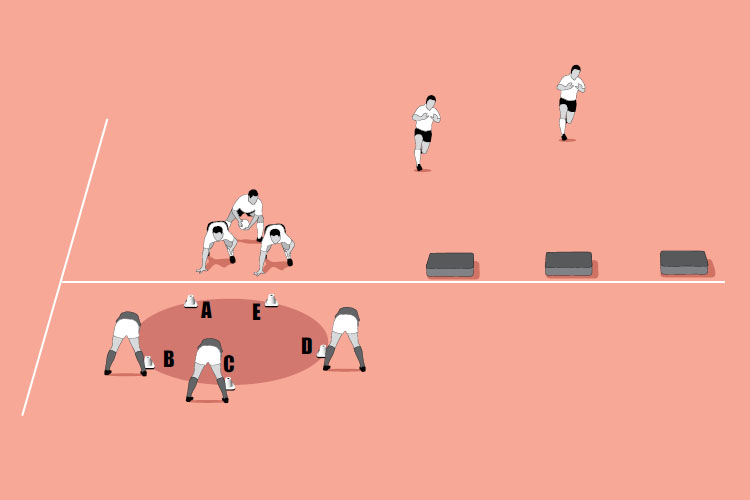
Development
Game situation
Add in a defending scrum half. Set up the scenarios in which the ball is on the pitch (e.g. 15m from the touchline, 5m from the try line), so the scrum half either follows around the scrum, or steps off and to the side. Play a game of 6v6 touch rugby. If there is an infringement, have a 3v3 scrum but opposing “props” bind at arms length and the putting in side win the ball. Hookers bind loosely on their props. This should give the effect of having a back row from a set piece.What to call out
- “Keep your proper scrum shape, even though there is no scrum”
- “Intercept the ball carrier, don’t run forward”
- “Target the ball if you are the second man, target the legs as first man”
Newsletter Sign Up
Coaches Testimonials

Gerald Kearney, Downtown Las Vegas Soccer Club

Paul Butler, Florida, USA

Rick Shields, Springboro, USA

Tony Green, Pierrefonds Titans, Quebec, Canada
Subscribe Today
Be a more effective, more successful rugby coach
In a recent survey 89% of subscribers said Rugby Coach Weekly makes them more confident, 91% said Rugby Coach Weekly makes them a more effective coach and 93% said Rugby Coach Weekly makes them more inspired.
Get Weekly Inspiration
All the latest techniques and approaches
Rugby Coach Weekly offers proven and easy to use rugby drills, coaching sessions, practice plans, small-sided games, warm-ups, training tips and advice.
We've been at the cutting edge of rugby coaching since we launched in 2005, creating resources for the grassroots youth coach, following best practice from around the world and insights from the professional game.
